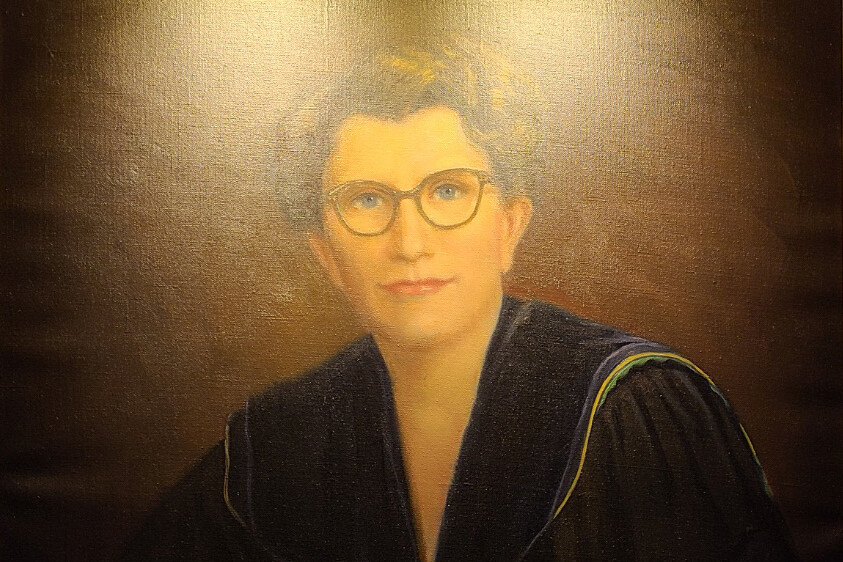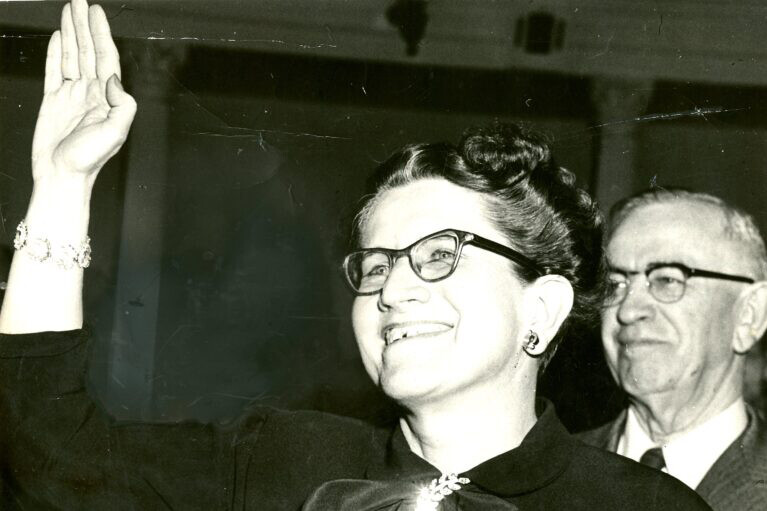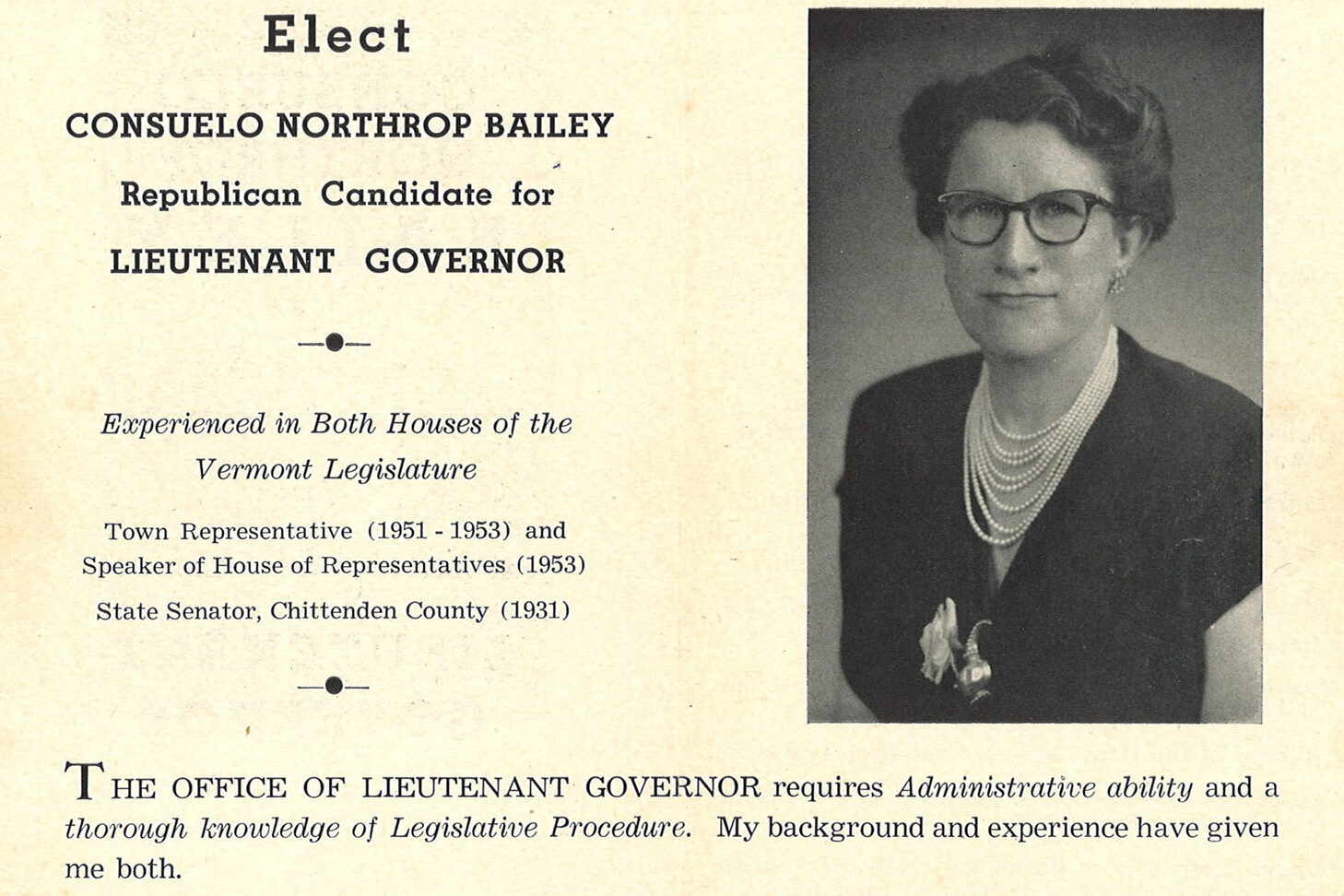Consuelo Northrop Bailey
How did Consuelo Northrop Bailey break barriers for white women in politics and law?
In the Vermont State House, there are only three portraits of women. Consuelo Northrop Bailey, a Vermont lawyer and politician, is one of them.
Consuelo Northrop was born on her family’s farm in Fairfield, Vermont in 1899. As a child, her parents encouraged her to work hard in school. When she was 15, she watched a court case. A lawyer argued that a woman was too short to inherit(to get money from someone who died) a large amount of money. Bailey thought that was a terrible argument. This injustice(unfair treatment) helped spark her interest in law.
In 1922, Consuelo Northrop went to Boston University Law School. She found that some people did not take her seriously because she was a woman lawyer. She was well-known for being a strict lawyer. She was especially tough with those who broke prohibition(a time when people were not allowed to make, buy or sell alcohol) laws. Northrop married lawyer Henry Bailey in 1940 and become Consuelo Bailey.
Bailey decided to enter politics while working as a lawyer. She believed women could be politicians if they were “willing to work and sacrifice(give up something important for a cause).” Bailey had to work harder than a man running for the same position to get people to vote for her. She ran for Speaker of the House in 1953. She visited 225 Vermont towns and 200 representatives to help her win the position. She became the first woman in Vermont to be elected Speaker of the House.
In a speech, Bailey talked about the first line of the Vermont Constitution. The line says, “All men are created equally free and independent.” She hoped that “those words will take on a more complete meaning for the women… of Vermont.” Bailey thought it was important to talk about equality(when all people have the same rights and opportunities) for women.
Bailey won the election for Lieutenant Governor of Vermont in 1954. She was the first woman in the United States to be elected to this position. She decided not to run for governor in 1957. Her husband was sick. Some government friends also believed that Vermont was not ready for a woman governor.
Bailey broke many barriers for white women in both law and politics. She paved the way for future Vermont governor Madeleine Kunin to follow in her footsteps. Almost thirty years later, in 1985, Kunin was elected Vermont’s first woman governor.
Thinking About History
Historians ask questions to think deeply about history.
Most of the portraits that hang in the State House are governors. Consuelo Northrop Bailey was not a governor. Does her portrait deserve to be in the State House? Who else deserves a portrait in the Vermont State House?
Bailey’s campaign flyer listed her success in previous elections. Do you think hard work or experience is more important for being a Lieutenant Governor?
Learn More
Follow the links below to explore related topics.
Watch the video Consuelo Northrop Bailey from This Place in History
See Bailey’s desk from the Vermont State House
See where Bailey's portrait hangs in the Vermont State House
Look at portraits of past Vermont governors, including Madeleine Kunin
Copy and paste this citation to show where you did your research.
Vermont Historical Society. "Consuelo Northrop Bailey." Vermont History Explorer. Accessed January 6, 2026. https://vermonthistoryexplorer.org/consuelo-northrop-bailey


